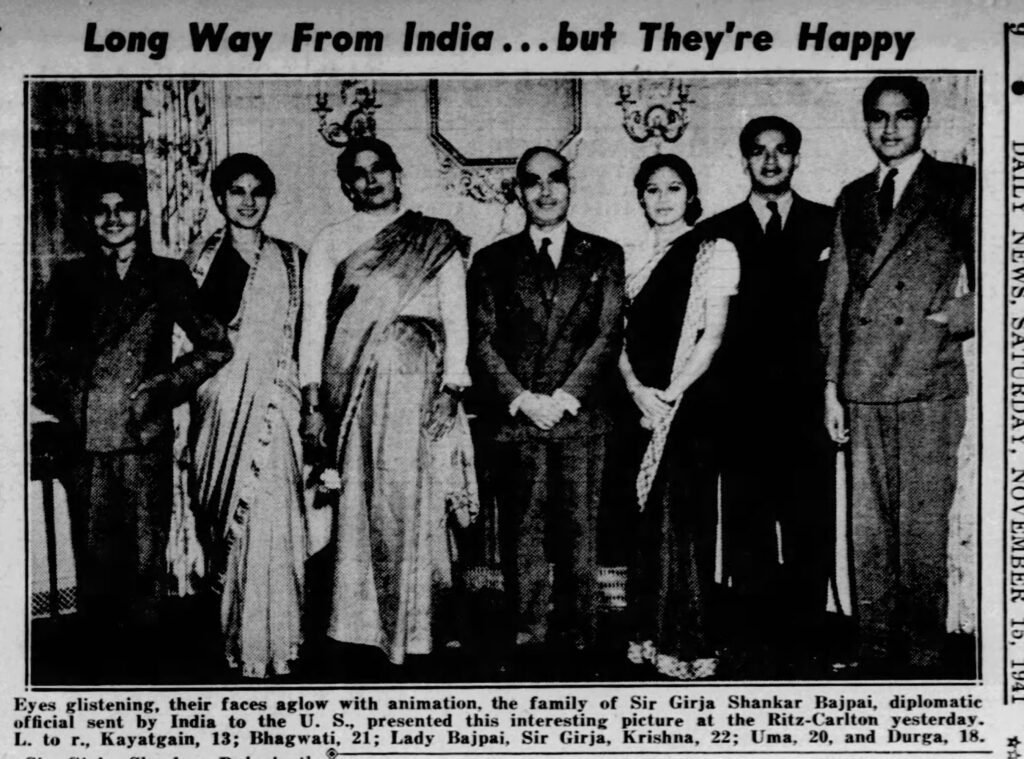Judged by his performances on that eternal metric of brilliance in Indian households – the art of exam writing, Girja Shankar Bajpai was a young prodigy. He aced every exam he ever took, from Primary School to Oxford University, with top honours.
Well, almost.
He didn’t qualify for the Imperial Civil Service in his first attempt. He must have been greatly disappointed, if not outrightly shocked, we can only speculate. But the record shows that in his next attempt in 1914, the short-statured Bajpai stomped his authority with a hundred-mark lead over the next rank-holder.
Born in Allahabad in 1891 to the upper middle class Brahmin household of Seetla Prasad Bajpai, a later chief justice and a Minister of Justice in the Jaipur state, the young Bajpai grew up to become that strange paradox, called the Modern Indian Man: an Anglophile with an Oxford-accent who was at home in English surroundings but refused to dine with his Oxford peers to maintain caste purity; an erudite mind who encouraged his kids to be widely read but admitted proudly that his daughters were ‘educated but not too emancipated’; a debonair bureaucrat who dressed tastefully in western clothing, stocked his house with French wines and Persian rugs, but preferred his wife remain in purdah well into the 1930s (as Amit Das Gupta reveals in The Indian Civil Service and Indian Foreign Policy, 1923-1961, although she had certainly discarded purdah by the 1940s when the Bajpais moved to the US). Bajpai was ‘as cosmopolitan as he is oriental’, declaimed an American newspaper in the early 1940s.
Upon clearing the ICS, he was inducted into the United Provinces cadre and dispatched to serve as district officer. Never a field enthusiast, he resented the everyday toil of a provincial posting. (In fact, he was also nearly exceptional among the adventure-loving British civil servants in his dislike of any field-sport.) But he was both willing and suited to do spine-exhausting deskwork. To his delight, Bajpai was relieved of his self-confessed ‘uncouth’ surroundings and sent as under-secretary to the UP secretariat in 1920.

Caption as in the image: “Eyes glistening, their faces aglow with animation,
the family of Sir Girja Shankar Bajpai, diplomatic official sent by India to the
U. S., presented this interesting picture at the Ritz-Carlton yesterday. L. to r.,
Kayatgain, 13; Bhagwati, 21; Lady Bajpai, Sir Girja, Krishna, 22; Uma, 20,
and Durga, 18.”
In April 1921, most likely on the recommendation of his family friend Tej Bahadur Sapru, he was picked to accompany the liberal leader V.S. Srinivasa Sastri on a tour to England, as the latter’s private secretary. Sastri and Bajpai travelled together, as India’s formal representatives to the Imperial Conference in London. Both performed exceedingly well, which resulted in the duo being deputed to represent India in other corners of the world, from Switzerland, to Canada, to Australia, to New Zealand. But a particular highpoint for India – and its two representatives – was when Sastri was appointed as India’s plenipotentiary to the Washington Naval Conference, which was convened by the American president Warren G. Harding. It is their journey to Washington that I focus on in the next section.

